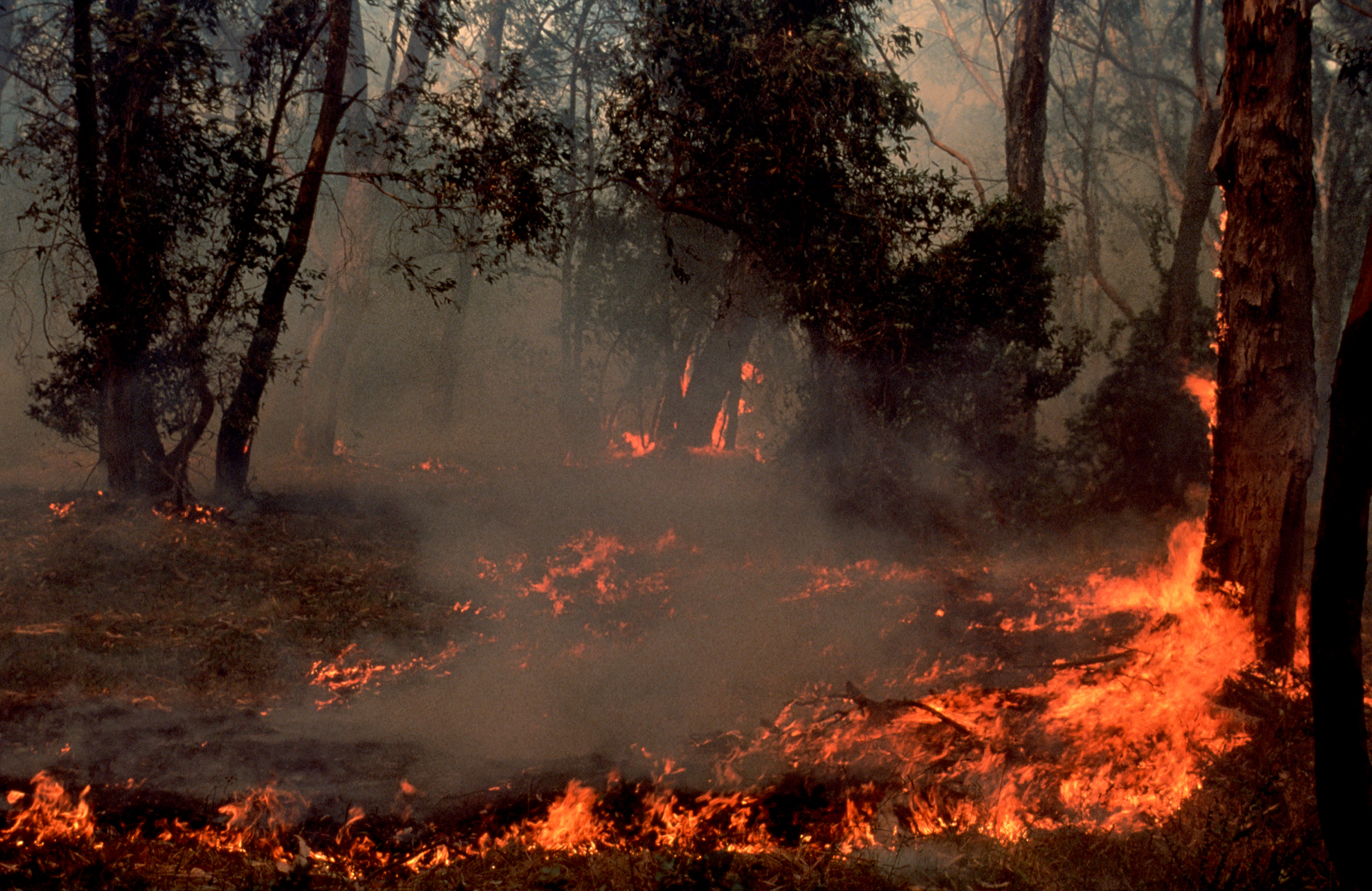Eduard Campillo-Funollet
Recent advances in mathematical modelling and simulation could help to predict the behaviour of bushfires. The new techniques shed light on surprising phenomena such as fire spreading in directions perpendicular to the wind. With the help of these mathematical tools, it will be possible to make better use of the available resources to stop a fire. According to Jason Sharples, from the University of New South Wales, traditional mathematical modelling of bushfires was not accurate for extreme fires. A new assumption was required to capture the extreme behaviour: the fire influences the atmosphere around itself. “The event becomes both a fire and a storm”, says Dr. Sharples.
During the last year, several authors published research papers providing new insights into the behaviour of bushfires. They study phenomena like the effect of the terrain slope and curvature, and the creation of wind due to the fire, from small fire whirls to extreme pyro-tornadogenesis, where the fire is so strong that it creates clouds, storm systems and tornadoes.
Bushfires cause loses every year. In Australia, extreme events like the 2009 Black Friday caused more than 170 victims and the destruction of 2000 homes. During the 2003 Canberra bushfires over 490 people were injured. Extreme phenomena caused the death of 5 firefighters in Spain in 2009, when a sudden change in the fire direction left them trapped between the flames and a rock cliff.
“Extreme phenomena caused the death of 5 firefighters in Spain in 2009, when a sudden change in the fire direction left them trapped between the flames and a rock cliff.”
The main feature of the new mathematical models is the dynamic interaction between the fire and its surroundings. Due to technical and computational limitations, traditional fire spread models assumed a fixed set of conditions, such as wind speed and temperature, and kept them constant. The new models include the influence of the fire on its environment, thus allowing the prediction of phenomena like fire whirls. Bushfires heat the surrounding air, and the hot air flows creating currents that in turn have an effect on the propagation of the fire. These fire-induced winds can create storm systems and tornados. A tornado created by fire was observed in Canberra during the 2003 Canberra bushfires.
Moreover, the winds induced by the fire can create very counterintuitive phenomena. Imagine a bushfire spreading up the slope of a hill. The fire heats the surrounding air, and when the hot air ascends it creates whirls that push the fire laterally. Suddenly, the fire moves across the hill slope instead of spreading uphill. But if the slope is very steep, there is less air between the fire and the hill. When the hot air ascends, it leaves an area of low pressure in front of the fire, and the fire suddenly “explodes” uphill again.
Mathematics also provide tools to study the probabilities of a fire starting in a given area. Using data analysis techniques and the observations of satellites and surveillance flights, it is possible to predict the likelihood of fires, allowing a more efficient allocation of resources in the areas with higher risk levels.
“Fire trucks and helicopters will lead the charge, but mathematicians will help to conduct the battle from behind their desks.”
The new mathematical results and techniques will provide crucial information to the firefighters. The predictions from the mathematical models will allow to plan firefighting operations to avoid dangerous situations. Fire trucks and helicopters will lead the charge, but mathematicians will help to conduct the battle from behind their desks.
Image: Wikimedia Commons

